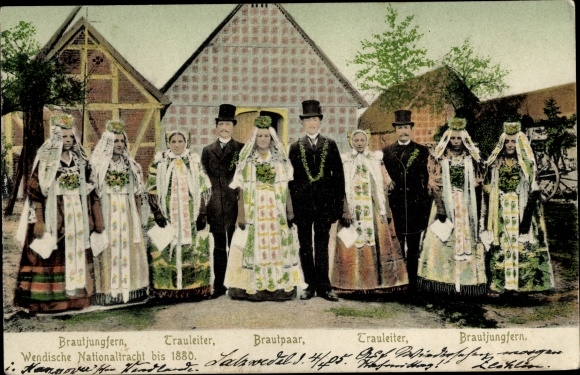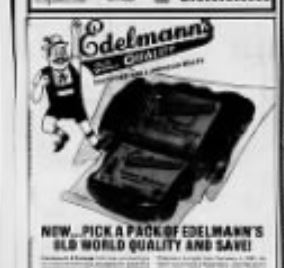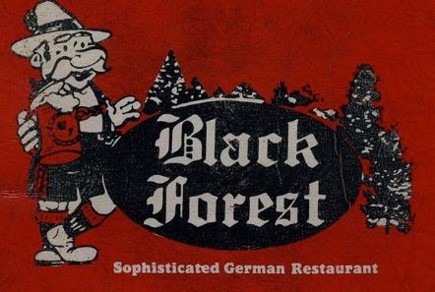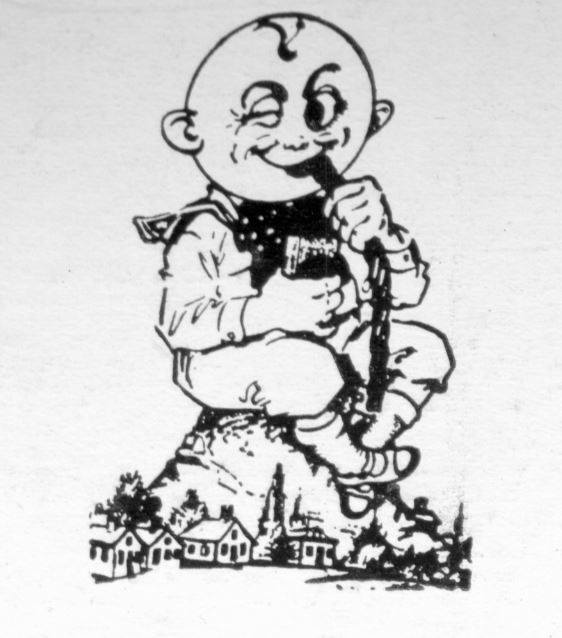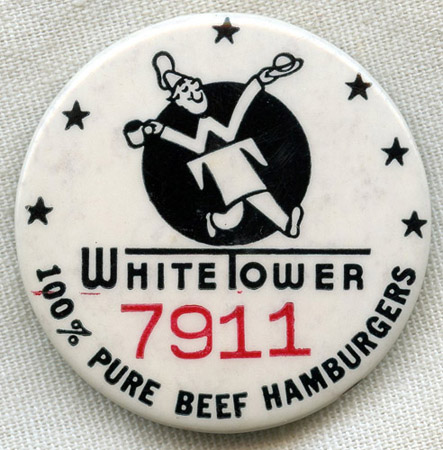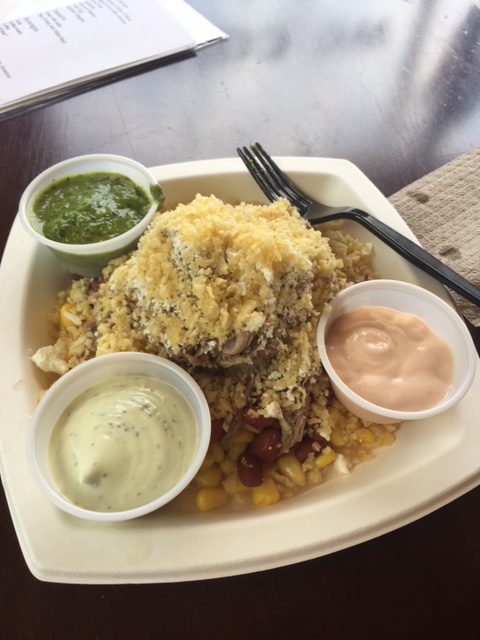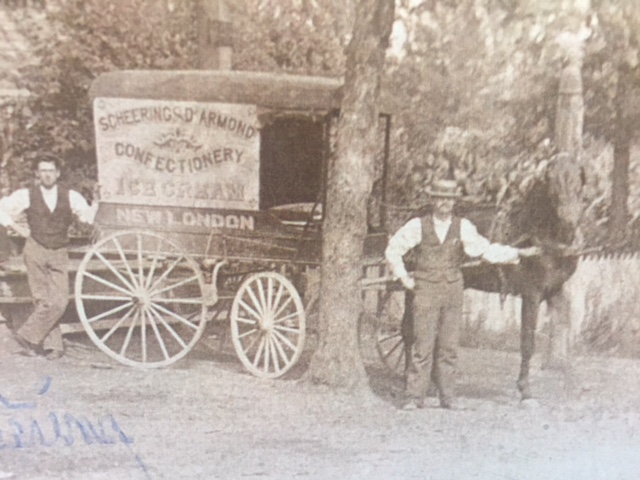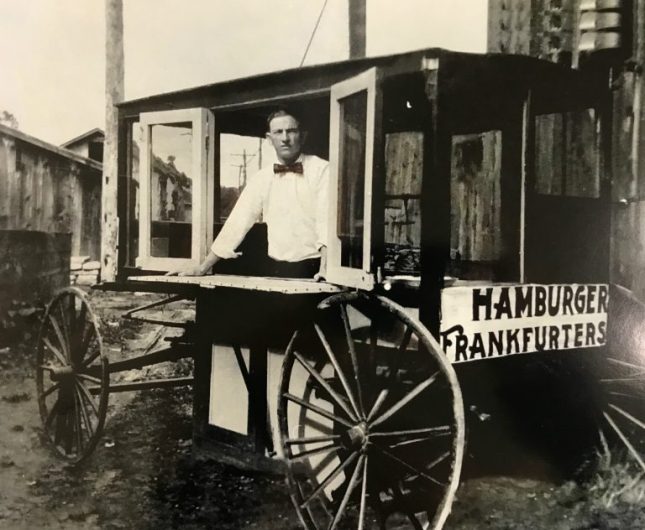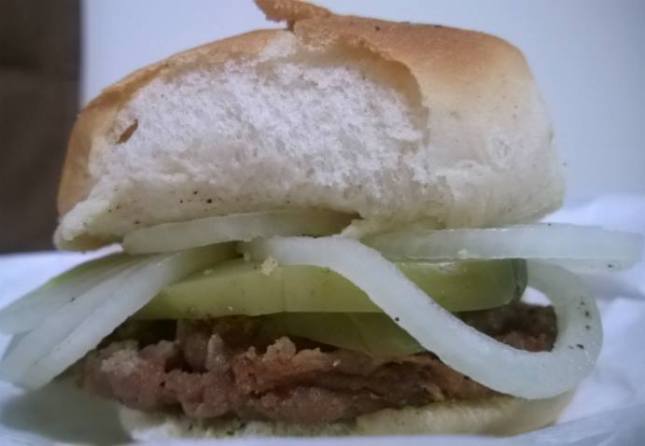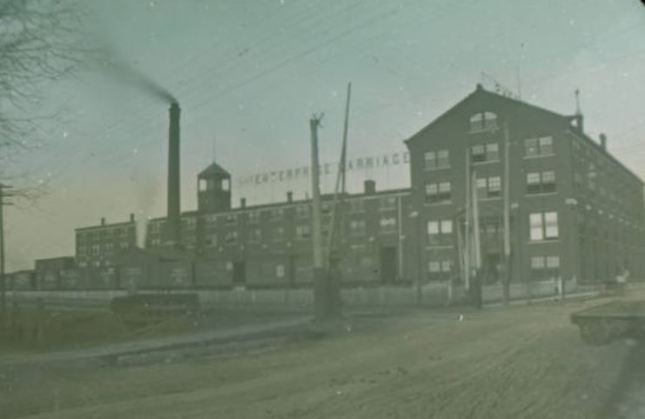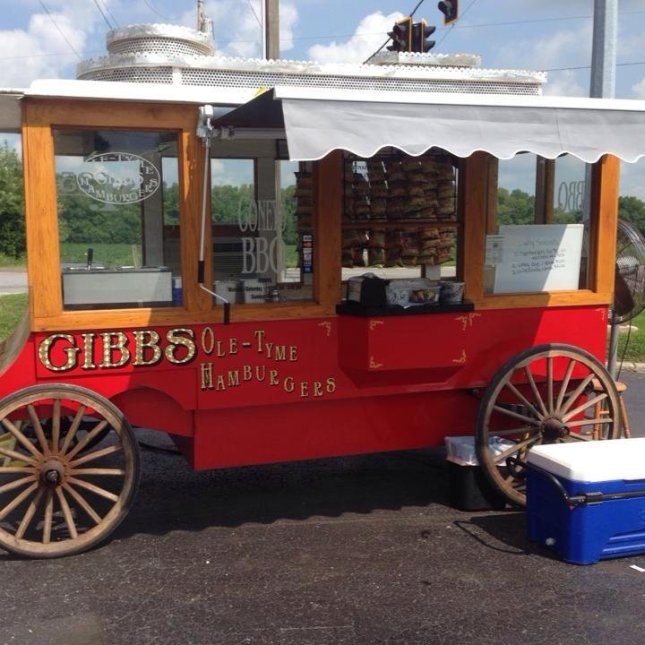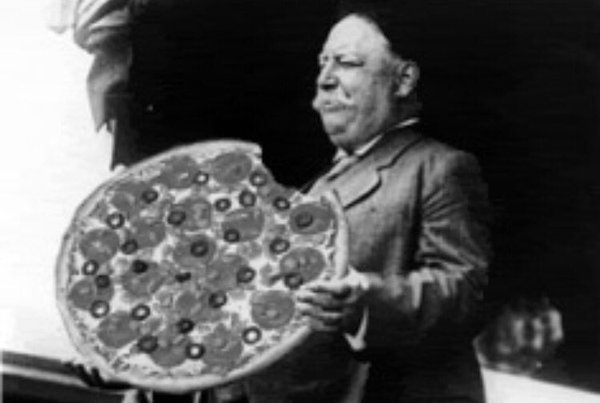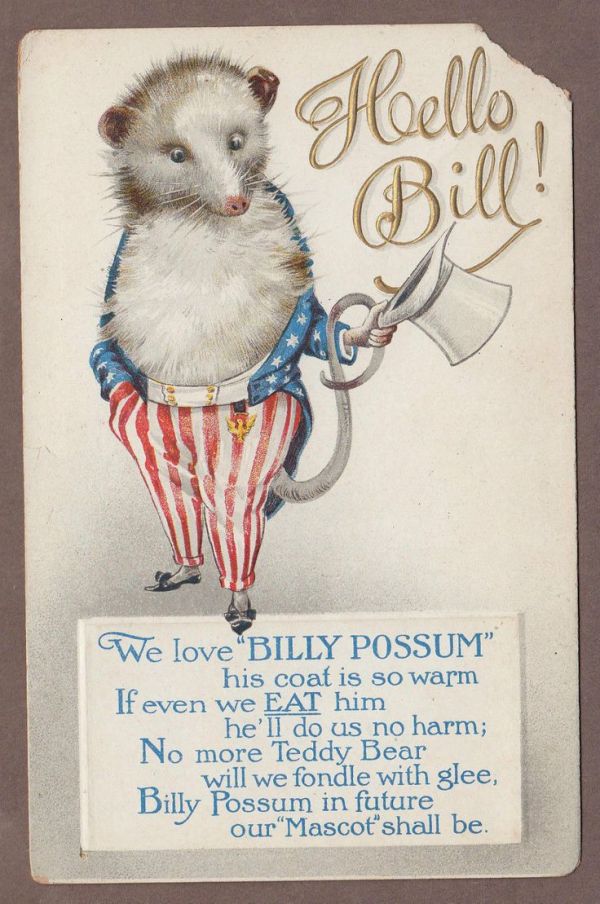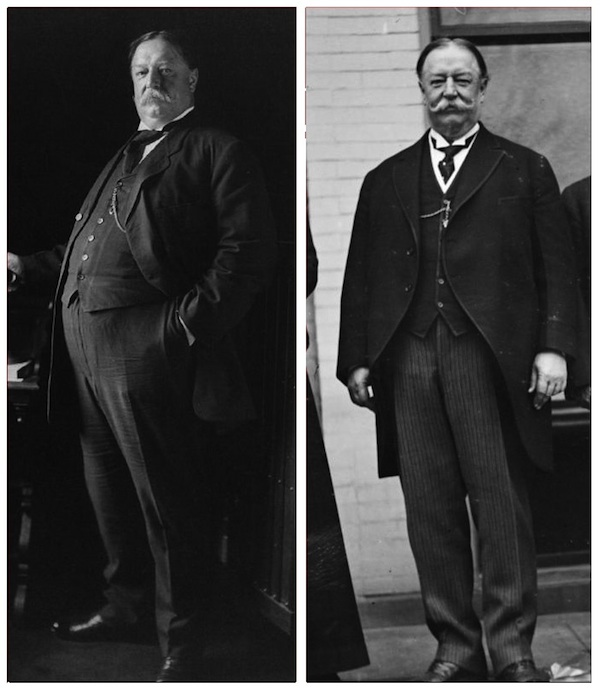
Elmer Hensler, the Sausage King of Cincinnati, and Owner of Queen City Sausage.
There’s nothing discreet about the Queen City Sausage campus on Spring Grove Avenue and Straight Street. A rampant flying pig sculpture from the Cincinnati Big Pig Gig graces the roof of the front 1888 building. It’s a monument really, to this area, the historic meat packing district along Camp Washington’s Spring Grove Avenue, that gave Cincinnati it’s Porkopolis nickname in the 1880s. Big names like Kahns and many others had slaughterhouses and production facilities here. Now, they’re all gone, and Queen City Sausage is the last one standing.
Cincinnati’s spry 88 year old Sausage King, Elmer Hensler, has reigned over his sausage empire here since his founding of the company in 1965. And he has a framed list of 40 Cincinnati meat companies who have folded since he started. Elmer is truly a walking history museum, having worked in the industry since he was 11, and forgetting more about all the local meat packing companies in Cincinnati than most of us will ever know. I came here to meet Elmer and his employees as part of this (my) big goetta project because he’s the largest goetta producer in Cincinnati. If anyone knows about goetta and its origins, its him. This campus has expanded more than 12 times, and is a merging of several facilities, like an old OPW foundry, and several old school sausage makers. He plans to create more refrigeration areas inside and has enough room in the back to expand even further. Investing in new equipment is not something Elmer is afraid to do to make the best quality sausages and goetta Cincinnati has to offer.

Although they’ve always made goetta, it’s only been since they hired Marketing Director Mark Balasa eight years ago that their production of the local delicacy has amped up to the level it is today. Mark is the mastermind behind Goettafest and spent 12 years working for Gliers in Covington. He brings a guerilla marketing approach to goetta and Queen City Sausage’s other brands. For a company over 50 years old, they’re approaches are not outdated. They have a large social media footprint and brand sponsorships.
They’ve been the official sausage of the Cincinnati Reds, In a long tradition of German fussball or soccer clubs, whose stadiums each have a house sausage, Queen City just announced they are the official sausage of our FC Cincinnati Soccer team.
On their website they promote goetta as a great slider, a key component to a good Reuben, and in a goetta grilled cheese.
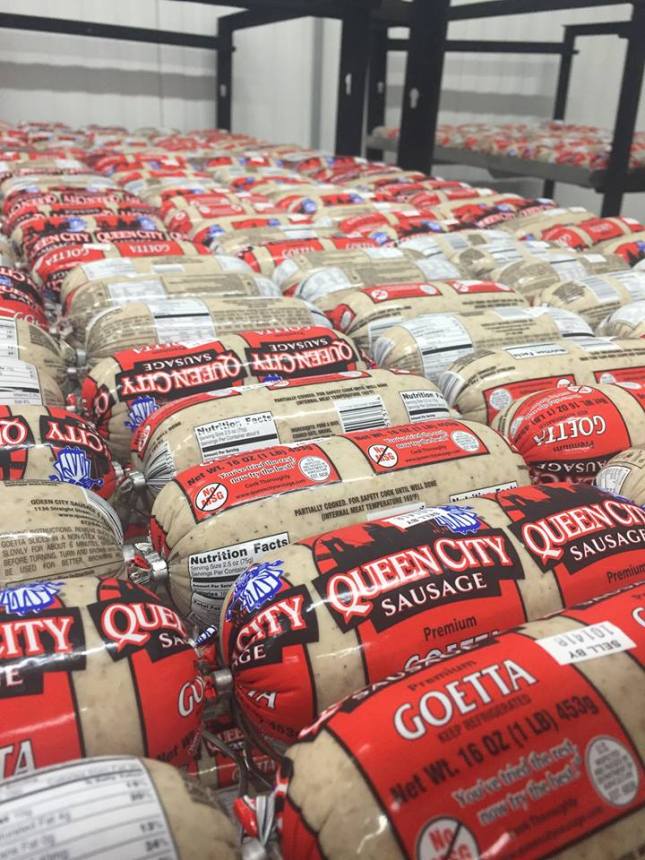
When it comes to goetta, Mark says the easiest way to describe and market it to anyone not familiar is that its a breakfast meat, made from pinhead oats, beef, pork onions and spices. That way they can identify it with a meal and then start understanding it. Only us Cincinnatians understand the complex history and background of goetta that connects us to our immigrant past.
In addition to goetta, they make a variety of sausages – andouille, Italian, chorizo – including local Cincinnati Brats and metts. Elmer says their metts are basically Hamilton metts without the mustard seed. They make a long list of lunch meats including Leona, Dutch and Pepper loafs, as well as head cheese and souse, known locally by old German-Cincinnatians as schwartenmagen and sutze. They have a bierwurst made with local Hudepohl 14 K, and there’s a potential there might be a Rheingeist beer sausage in the future. They’re about to become neighbors as Rhinegeist is expanding brewing operations to a large complex down the street from Queen City Sausage.
The day of my visit, I pass a two story image of the Sausage Queen logo as I ascend the outside steps up to the second story offices, the brain trust of this remarkable meat factory. INside the lobby I look through a glass window and see Elmer signing checks for his employees, many of whom that I will meet, have worked over thirty years for him. One worker, George helped his son pay for his education to become a Master of Education. That son Ken Blackwell would become Mayor of Cincinnati. Elmer looks up and smiles and buzzes me into the brain trust.
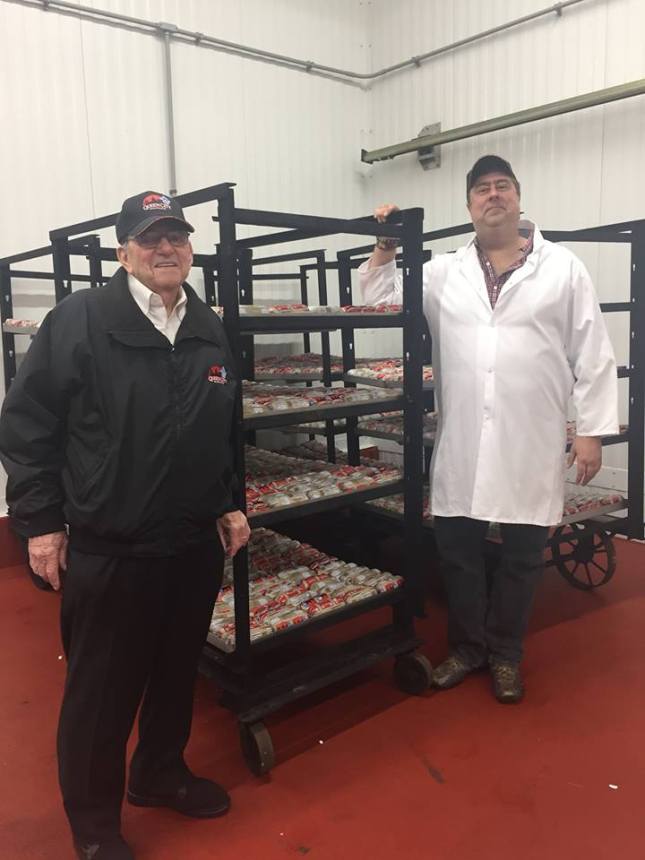
While Elmer finished up, I am led to the conference room, which is where he’ll host a lunch for me of their products, which he graciously does for all visitors. The walls are filled floor to ceiling with old photos, articles, and posters of the history of their company and Cincinnati’s porkopolis past. I even get a peak at some of the promotional materials for their Wicked Sausage line, a family of six hot pepper sausages they are about to release with Jungle Jims and Findlay Market in a few weeks.
Elmer grew up in Cincinnati’s West End, another faded piece of our past. After surviving the 1937 flood at a home on Gest Street and Freeman Avenue, his mother, Nora, found a house on York street owned by the Proctors of P & G, where Elmer grew up. His father, Milton was a swtichman for the railroads, and with eight siblings, Elmer knew any fortune he made would have to be earned. At 11 he started hanging around the stockyards helping out in the early mornings before school at St. Augustin’s. He has a great story about one of the nuns swatting him so hard he fell out a window, as he was saying hello to some girls at the school across the street. Soon he would be working on the slaughtering floors, stirring blood from the meat to make beutelwurst or johnny in the bag blood sausages for one of his first employers. Because Queen City doesn’t slaughter, they’ve never made a blood sausage.
Elmer’s first business partners were a German immigrant from Munich, Alois Stadler, who had worked locally for Karl Frank and Adelmann’s. They later brought in George Nadel, a Yugoslavian immigrant master sausage maker, who had worked for Roland Meats. He bought both of them out in the 90s.
Goetta comes in tubes, bricks for the larger commercial customers, and their new individually vacuum-packed slices. I think that’s a brilliant way to package goetta, and they’re the only ones doing it. Now you can cook individual slices without having to worry about keeping the rest of the tube fresh until the next cooking. Kroger is their largest customer, but he’s proud to supply restaurants, like his friend Johnny Johnson’s Camp Washington Chili – another Cincinnati icon just up the street in Camp Washington.
None of their products are ever frozen, and only good quality meats, and no fillers are added. Certainly there is no mechanically separated chicken present, which most national producers use in their hot dogs and sausages.
After a history of the business from Elmer, we take a plant tour. Our tour starts with the cutting area, where the Cottage Ham is taken out of the cut known as the Boston Butt, which is actually the pork shoulder. They let me take pictures of the plant and are completely transparent about their procedures. They should, they have nothing to hide, as quality is King at Queen City Sausage. I’m amazed at how clean and bright the plant is. It’s like a Willy Wonka factory for meat, highly automated, but still monitored closely by employees. I almost expect the workers, donned in bleached white hoodies to insulate from the refrigeration, to break into an Oompa Loompa song about goetta. Each area has its own wonderful, distinct smell as we progress through the meat grinding, filling, smoking, and packaging rooms. Unlike others who use liquid smoke, Queen City uses real hickory wood to smoke their metts and other products.
We pass the smoking and steaming chambers on the tour. Cincinnati Brats are steamed, not smoked like the metts. You’re tempted to taste one of the cooling sausages off the hanging tree after it comes from the smoker. But I’m not going to do anything to get ejected from this amazing plant tour. No stealing of an everlasting gobstopper like the bad kids in Willy Wonka. I mention to Elmer that I’m more of a brat man than a mett man. So he pulls a brat off of a tree that has just exited the steaming chamber and says, “here taste a brat that has not yet seen human hands.” It’s wonderful. It has a smooth texture, enabled by their $300,000 boss mixer that handles all their fine-grind sausages. You can taste the pork and the fresh parsley and seasonings.
We pass pallets of pinhead oats, or oat groats, as they’re known anywhere outside of Cincinnati, which they get in 50 pound bags from Richardson Mills, that will go into the goetta. This product comes from Canada, and thankfully Trump’s tariffs have not extended to oats.
Elmer takes me into the spice room, where all the spices for their goetta and sausages are mixed and staged. This is the domain of Elmer’s younger brother, Art – who’s 86. Art retired from his first career, and his brother asked if he would join him making sausages. He’s a shorter, slim man with the cheerful disposition of a Keebler elf, and he is the master of flavor for Queen City. Art lets me smell the goetta spices he’s mixed, which are wonderful and I get a peak at the spice book that holds all the secret formulas for their products. I’ll never tell! Art then shows me the small stand mixer he was using to mix spices in the past. He said to Elmer, “You’re killing me with this small mixer!” So, for Art’s 80th birthday, Elmer bought him a horizontal mixer that has about four times the mixing capacity as the original one. If I am as spry and passionate as these two men in my late 80s, I should be so lucky.
Queen City makes about 5000 pounds of goetta per day. Recently they came out with a linked version of goetta which they call the Goetta Dawg.
When asked about where goetta might have been first introduced locally, Elmer says he thinks it might have come from Cincinnati’s West Side. He said butchers from the West side would come to him to buy his pork butts to make their own goetta.
We end the day with lunch in the conference room. It’s skyline coneys with Queen City andoule sausage and a special treat – chip wheelie ice cream sandwiches from Graeters. Elmer says it always helps to make friends with other Cincinnati food companies. We talk about the history of goetta and what’s facing the meat industry today. Then, I thank Elmer, Mark, and the operations guys for my tour and their gentlemanly hospitality, knowing that I just had an amazing rare glimpse into Cincinnati’s Porkopolis legacy.
Elmer has no plans for retirement. And the demand for their goetta doesn’t seem to be peaking or plateauing. We’re very lucky to have a hometown goetta producer who puts so much effort into quality.
